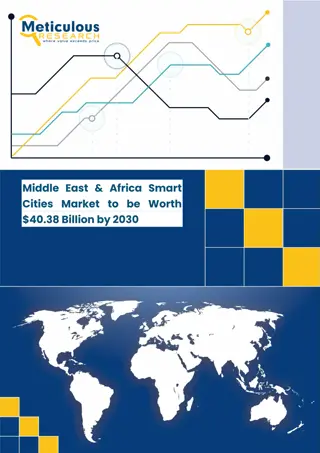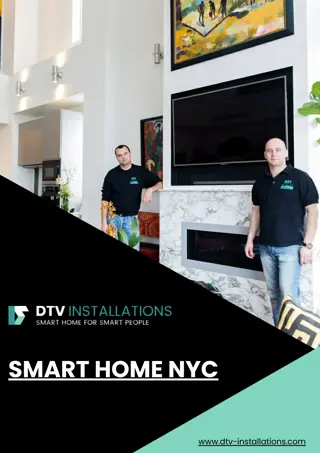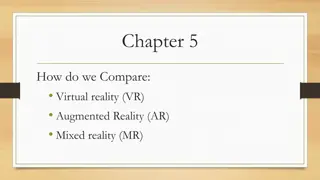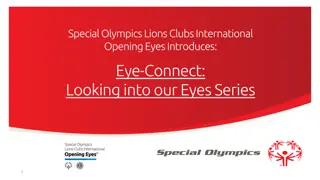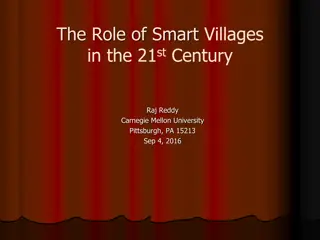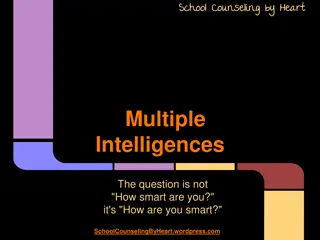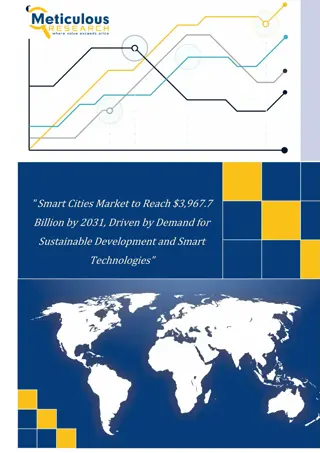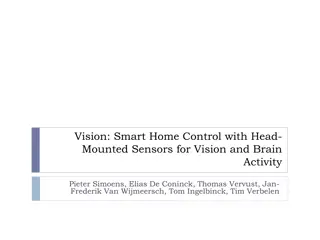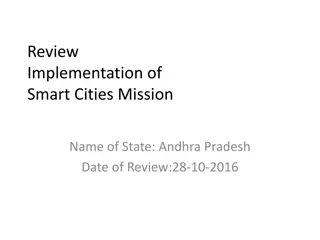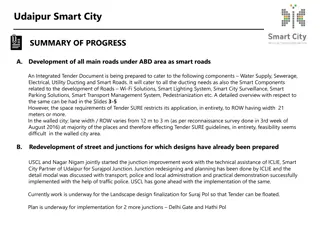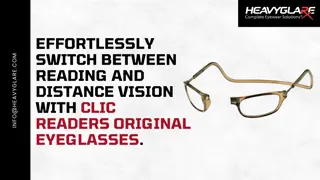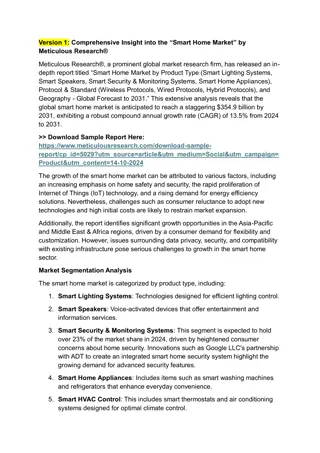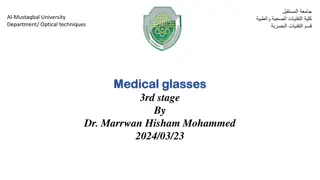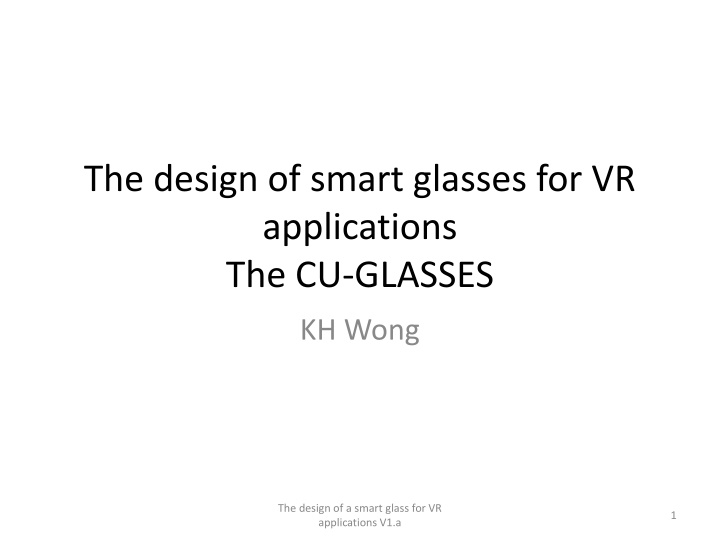
Smart Glasses for VR Applications by KH Wong: Design & Applications
"Explore the innovative design of smart glasses for VR applications by KH Wong, focusing on overlaying images and text onto the user's normal view. Discover the potential applications such as real-time translation and education enhancements. Dive into the extension possibilities for gaming and more."
Download Presentation

Please find below an Image/Link to download the presentation.
The content on the website is provided AS IS for your information and personal use only. It may not be sold, licensed, or shared on other websites without obtaining consent from the author. If you encounter any issues during the download, it is possible that the publisher has removed the file from their server.
You are allowed to download the files provided on this website for personal or commercial use, subject to the condition that they are used lawfully. All files are the property of their respective owners.
The content on the website is provided AS IS for your information and personal use only. It may not be sold, licensed, or shared on other websites without obtaining consent from the author.
E N D
Presentation Transcript
The design of smart glasses for VR applications The CU-GLASSES KH Wong The design of a smart glass for VR applications V1.a 1
Introduction Glass frame(no lens) Be able to overlay images or text to our normal view Simple, low cost and easy to build Can duplicate for the 2nd eye See through glass Close up Lens CCD display For text or graphics The CU-GLASSES The design of a smart glass for VR applications V1.a 2
The idea Top down view Eye Reflective , see through glass CCD display Close up Lens The design of a smart glass for VR applications V1.a 3
Tests Video link https://youtu.be/i2lpo0DHaWA The design of a smart glass for VR applications V1.a 4
Applications Translation Real time translate what you see into other languages Education Overlay more information to students when reading books The design of a smart glass for VR applications V1.a 5
Extension Add stereo display and cameras Application Gaming Add 3D information to the scene The design of a smart glass for VR applications V1.a 7
End Q&A The design of a smart glass for VR applications V1.a 8
MSC projects for 2016-7 To be supervised by Prof. KH Wong The design of a smart glass for VR applications V1.a 9
Msc1601 : Smart wearable glasses development Wearable glasses such as the google glass draw a lot of attention from the public because it provides novel applications to users such as displaying text and information to users directly inside their normal viewing area. We designed a novel wearable glass hardware that enlarge the display area and can be built at low cost. The function is more versatile such that one can see through the display so that text and graphics can be overlay on the real scene. See the reference below for the product idea and the description of the hardware. The project is to develop software applications such as text recognition, language translation or face recognition applications that can be incorporated into our wearable glass system. The project is suitable for those who are interested in system development and the creation of new products and ideas. We expect the system has high commercial potential and can be tuned into a successful commercial product future. Ref: http://www.cse.cuhk.edu.hk/%7Ekhwong/www2/cmsc5711/iv24_smart_glas ses.pptx The design of a smart glass for VR applications V1.a 10
Msc1602 : Artificial Neural network research for 3D computer vision Normally artificial neural networks such as the Convolution deep networks can perform well in object recognition etc. We suggest we can use the network for 3D reconstruction of models or camera pose tracking which may be useful for automatic driving. Traditionally, a network take the raw image as the input, our new idea is to feed the 2D feature tracking data to the network rather than the raw images to enable more robust results and more efficient training and recognition performances. The project is for those who interested in neural network research. Our approach is not just prepare data for large scale training but rather to investigate ways to redesign a new network architecture for better performances. References are: http://deeplearning.net/tutorial/lenet.html , https://www.tensorflow.org/ The design of a smart glass for VR applications V1.a 11


